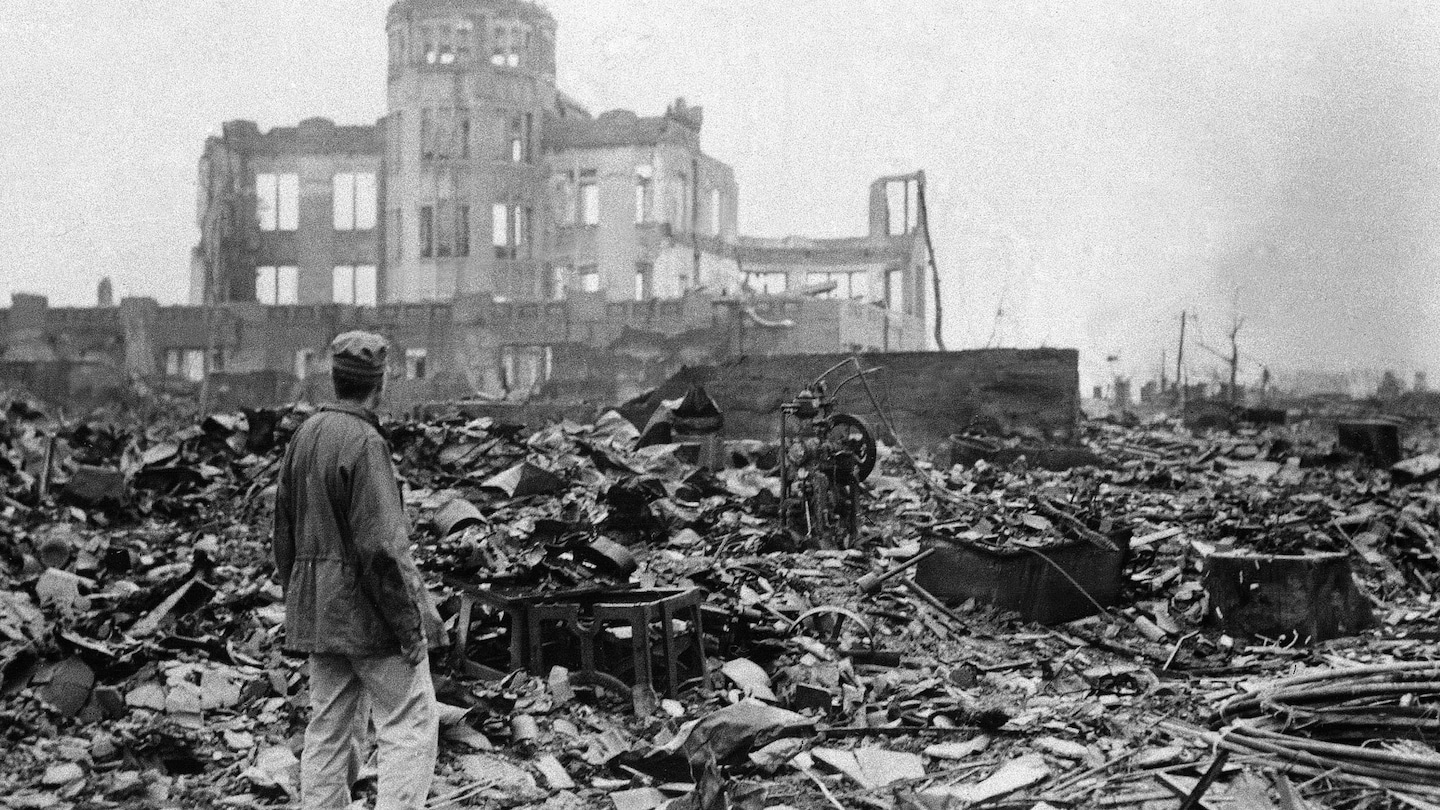A new nuclear race is underway, 75 years after the U.S. dropped the bomb

We still don’t have an exact number for those killed in the two Japanese cities — estimates range from 110,000 to 210,000 people. The radiation fallout sickened and probably curtailed the lives of countless others. Every year, the residents of Hiroshima and Nagasaki stand vigil in memory of those who died and the horror of what ravaged their cities. They also keep issuing urgent appeals to a world that is slowly forgetting what it means to live under the permanent shadow of an atomic holocaust.
This year, Hiroshima Mayor Kazumi Matsui urged the Japanese government to ratify a 2017 U.N. treaty calling for the elimination of nuclear weapons. He described what befell Hiroshima on Aug. 6, 1945, and Nagasaki a few days later as the result of an “upsurge in nationalism” that “led to World War II” and the U.S. decision to drop atomic bombs on the two cities.
“We must never allow this painful past to repeat itself,” Matsui said. “Civil society must reject self-centered nationalism and unite against all threats.”
“From the Russian standpoint, we’re not serious about arms control at this point,” said Thomas Graham, a former senior director for Russia on the National Security Council under President George W. Bush, to my colleague Karen DeYoung for an Aug. 1 article. “There is simply not time now to negotiate a new agreement, bilateral, let alone trilateral.”
Instead, both sides tout their advances in nuclear weaponry, with tactical additions that are bound to complicate the strategic landscape and raise new fears of a global nuclear arms race. “For the first time in the history of nuclear weapons, we don’t have to catch up with anyone,” Russian President Vladimir Putin declared in January. “On the contrary, the world’s other leading nations will have to first create the weapons that Russia already has.”
“The president has made clear that we have a tried and true practice here,” said Marshall Billingslea, the Trump administration’s arms control negotiator, earlier this year. “We know how to win these races and we know how to spend the adversary into oblivion.”
International officials are worried about the shifting status quo. “The web of arms control, transparency and confidence-building instruments established during the Cold War and its aftermath is fraying,” U.N. Secretary General António Guterres warned in a video message beamed to Hiroshima on Thursday. “Division, distrust and a lack of dialogue threaten to return the world to unrestrained strategic nuclear competition.”
Experts warn that emerging technologies of cyberwarfare, including artificial intelligence, risk multiplying the possibility of conflict and miscalculation. “We are returning to the days of the 1950s and 1960s, when each country decided for itself how many and what kind of weapons to deploy,” Vienna-based disarmament expert Nikolai Sokov told Germany’s Der Spiegel magazine.
Adding to their alarm is the sense that the memory of what it felt like to be afraid of nuclear war — let alone being victims of it as in Hiroshima and Nagasaki — is slipping away. “Decades of fearing a nuclear war that didn’t happen may have induced an unwarranted complacency that this threat belongs to the past,” wrote Jessica Matthews, a former president of the Carnegie Endowment for International Peace. “A million people gathered in New York’s Central Park in 1982 to call for an end to the arms race in the largest political demonstration in US history. Today the prospect of nuclear disaster is barely noticed.”
“We have forgotten how to fear nuclear war,” Sokov told Der Spiegel. “And the bad thing about that is that if people aren’t afraid of it, it will become inevitable.”
Nothing inspires fear more than reading the firsthand accounts of what those in Hiroshima and Nagasaki endured. “What I felt at that moment was that Hiroshima was entirely covered with only three colors. I remember red, black and brown, but, but, nothing else,” said Akiko Takakura, a 20-year-old in Hiroshima at the time of the bombing. “Many people on the street were killed almost instantly. The fingertips of those dead bodies caught fire and the fire gradually spread over their entire bodies from their fingers. A light gray liquid dripped down their hands, scorching their fingers.”
Hiroshi Sawachika, then a 28-year-old army doctor in Hiroshima, likened the smell of bodies burning in the radiation to that of “dried squid” when it is grilled.
“I learned that the nuclear weapons which gnaw the minds and bodies of human beings should never be used,” he said. “Even the slightest idea [of] using nuclear arms should be completely exterminated.”
Read more:






